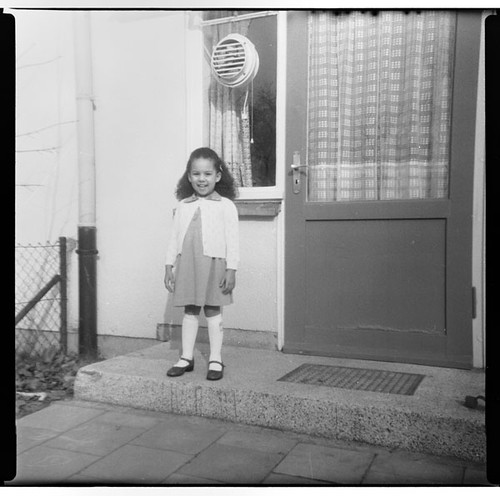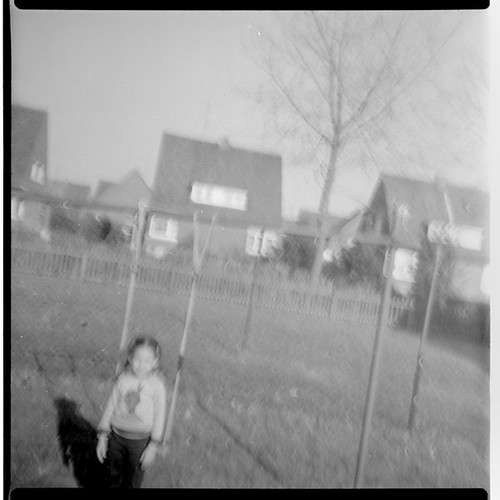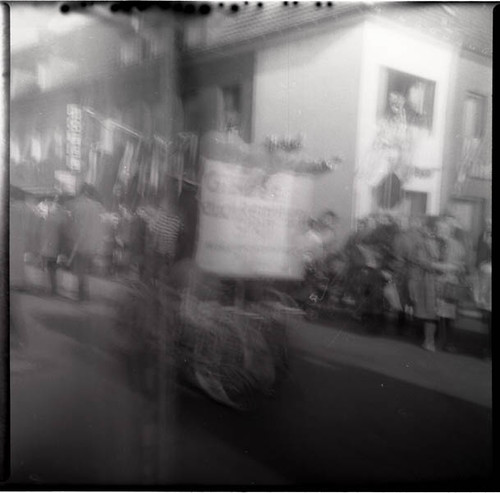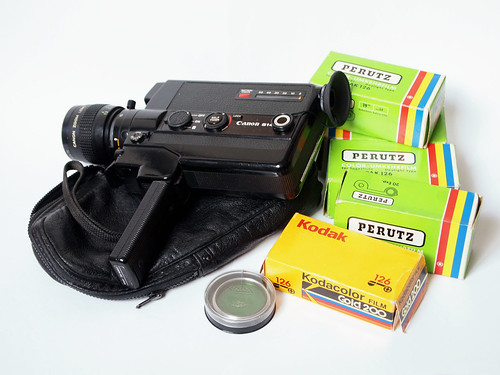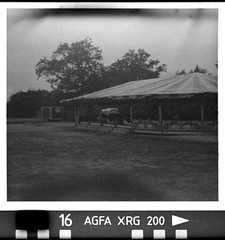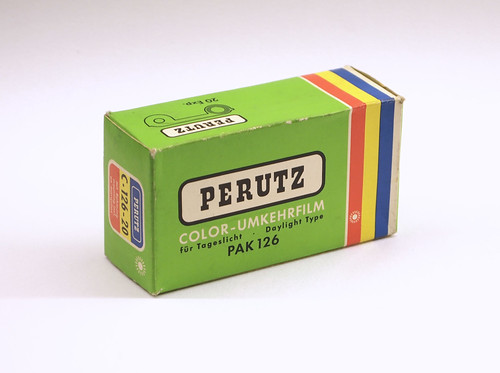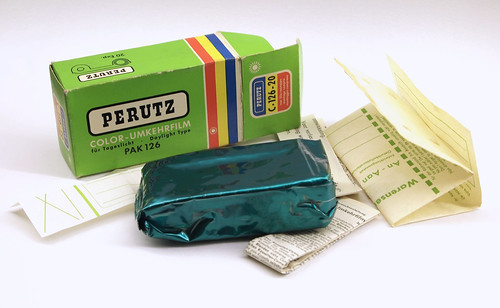From an undeveloped roll of Kodak colour film found inside a Brownie-type of camera. Using Rodinal diluted 1:100, presoaking the film, and then stand developing it for an hour produced usable monochrome negatives from the film. Colour films can be developed with black and white chemicals, as all films contain silver halides which are the light-sensitve element: in colour films these are replaced by dyes in the developing process. As I had no way of knowing how old the film was, and how viable it was for developing in colour chemicals, it made more sense to me to use black & white chemicals to attempt to process the film.
I didn't note down exactly which camera this came from at the time. On the film there are a couple of shots of a girl on a doorstep; the rest of the photographs all suffer from camera shake- there is one shot of the same girl in a back garden, and a two pictures that look like a parade of some sort.
There's something romantic about releasing images that have remained latent on a roll of film for many years. The girl's dress and the domestic architecture date this to any time between the 1960s and early 1980s perhaps.
Monday, 28 February 2011
Photographs developed from a found roll of film
Labels:
120 Format,
found film,
Rodinal,
stand development
Sunday, 27 February 2011
Paris Flea Market Finds
From the Porte de Vanves flea market:
Canon 514XL Super-8 cine camera: €20
Kinax green filter: €1
Five expired 126 film cartridges: €1 each
The 126 films are all still sealed; the Kodacolor film has a 'develop before' date of March 1991, the Perutz films have a date of May 1974. Quite possibly a waste of €5, but with 126 film no longer manufactured, I was intrigued to see whether the films might produce images from a Kodak Instamatic camera I have. While event-crewing last summer, I didn't want to take a 'proper' camera on jobs with me, but finding the Instamatic 50 in a drawer with a film in it, I took this. The film was Agfa XRG 200, and trying the fail-safe method of stand developing in Rodinal, a black & white film developer, produced some images.
The Perutz film is more interesting than the Kodacolor: it's a transparency film, although it doesn't use the E6 system of development, the only colour transparency system still available. It was originally process-paid, so inside the box is an envelope for the film and a number of different addresses around the world for Perutz labs which would develop the film, and return the mounted slides.
Perutz 126 Color Transparency film 64 ASA/19 DIN- expiration date May 1974.
What you get in the box:-
Foil wrapped cartridge of 64 ISO colour transparency film, 20 exposures
Process-paid return envelope in 7 different languages
Address label
Instruction leaflet in 7 languages
Leaflet listing Perutz Color Service processors in nine countries
Labels:
126 format,
Canon,
expired film,
Kodak,
Paris,
Perutz,
Super 8
Tuesday, 22 February 2011
In Praise of the Olympus Pen
The original Olympus Pen was a series of half-frame cameras produced by Olympus between 1959-1983 (the name has recently been revived for its Micro Four-Thirds digital system cameras). The Pen EE3 model came out in 1973 and was produced for a decade. It has a fixed-focus 28mm f1:3.5 Zuiko lens, which equates to 40mm in full-frame 35mm format. Exposure is controlled by a selenium cell meter surrounding the lens that matches aperture to one of two shutter speeds, either 1/40th or 1/200th. ASA (ISO) settings run from 25 to 400, and the camera has a hot shoe and PC socket for use with an external flash. If there is insufficient light, a red indicator appears in the viewfinder, and the shutter won't fire. There isn't much scope for manually overriding the automatic exposure, except by turning the film speed ring away from the ASA settings: there are distance markings from 1 to 4 metres for the dedicated GN14 flash, or aperture numbers for a generic flash. Without a film speed selected, the shutter defaults to 1/40th of a second for flash sync.
When I was at college in the 1990s, with the internet in its infancy, information about different cameras was harder to come by. Much of this simply came from talking to people with more knowledge and experience. A photography tutor at college, Mick Williamson, had been keeping a half-frame photo-diary, and I was inspired by this a few years later when a half-frame camera appeared in the window of the local camera shop. Before Ebay, a decent camera shop would have at most a few dozen secondhand cameras in stock at any one time. It could have been any model of half-frame camera; it happened to be the Olympus Pen EE3. I bought the camera just as I was about to leave college, and it came in useful for documenting the build-up to my end of year show. Using the Pen EE3 then was rather like the way most people use digital cameras today, film felt a lot less precious when one could shoot 72 frames before needing to change the roll. Compact for a film camera, it's small enough to carry around, works without batteries thanks to the selenium meter, and is easy to use: not needing to set exposure controls or focus the lens makes operating the camera simply about framing.
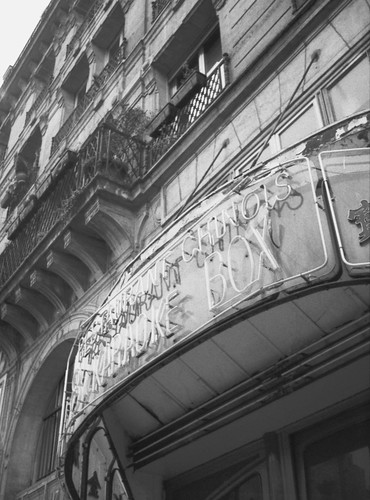 |
| Olympus Pen EE3 sample |
Of course, having an image area half that of a conventional 35mm frame does mean that the resultant photographs will have larger grain relative to their size. Set against the smaller frame size however, the Zuiko lens is pretty sharp, and the results are good especially when used with slower, finer grained films. The above image was shot on FP4 film, rated at 200 ISO (I personally like the slightly increased contrast of pushing the film 2/3s of a stop, as well as the extra speed), developed in Rodinal at a dilution of 1:50.
Subscribe to:
Comments (Atom)
